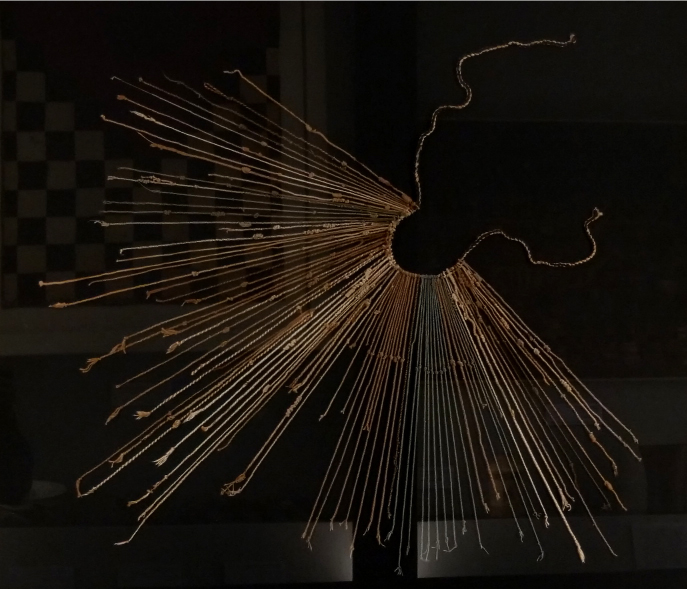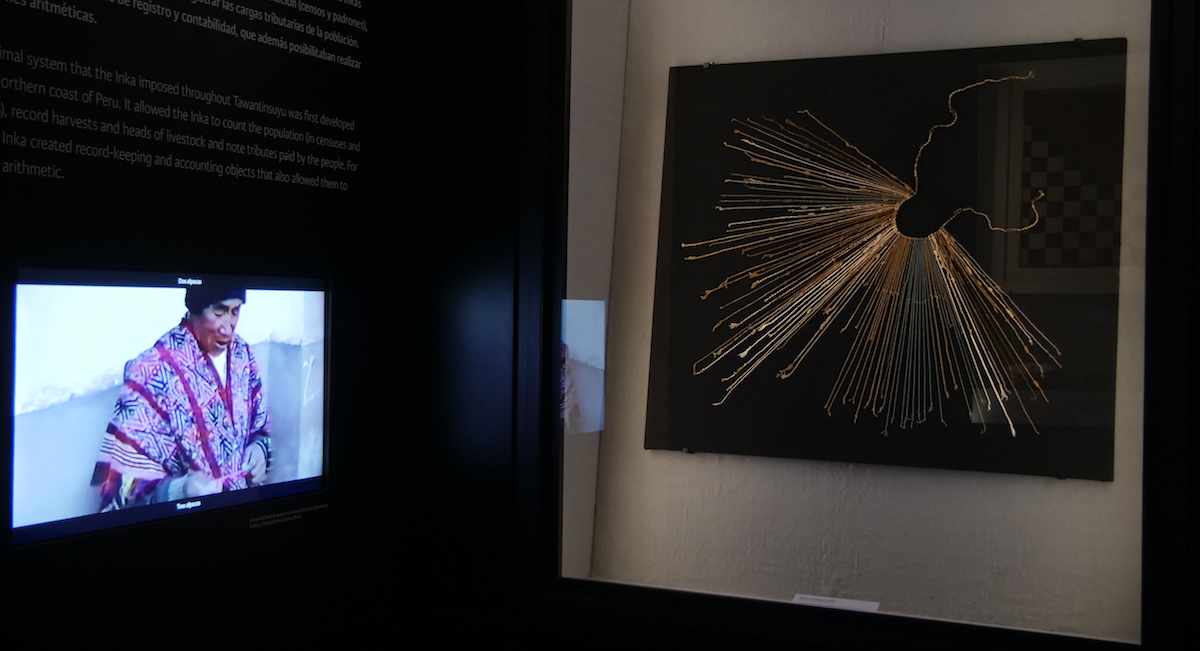The decimal system that the Inka imposed throughout Tawantinsuyu was first developed on the northern coast of Peru. It allowed the Inka to count the population (in censuses and registers), record harvests and heads of livestock and note tributes paid by the people. For this, the Inka created record-keeping and accounting objects that also allowed them to perform arithmetic.
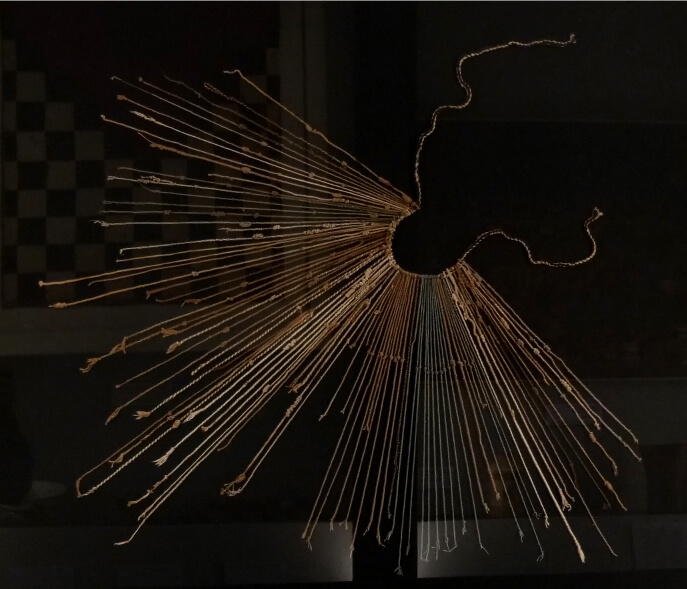
Quipu. Accounting instrument.
Camelid fiber
Inka, Andes Centrales
1400-1532 d.C.
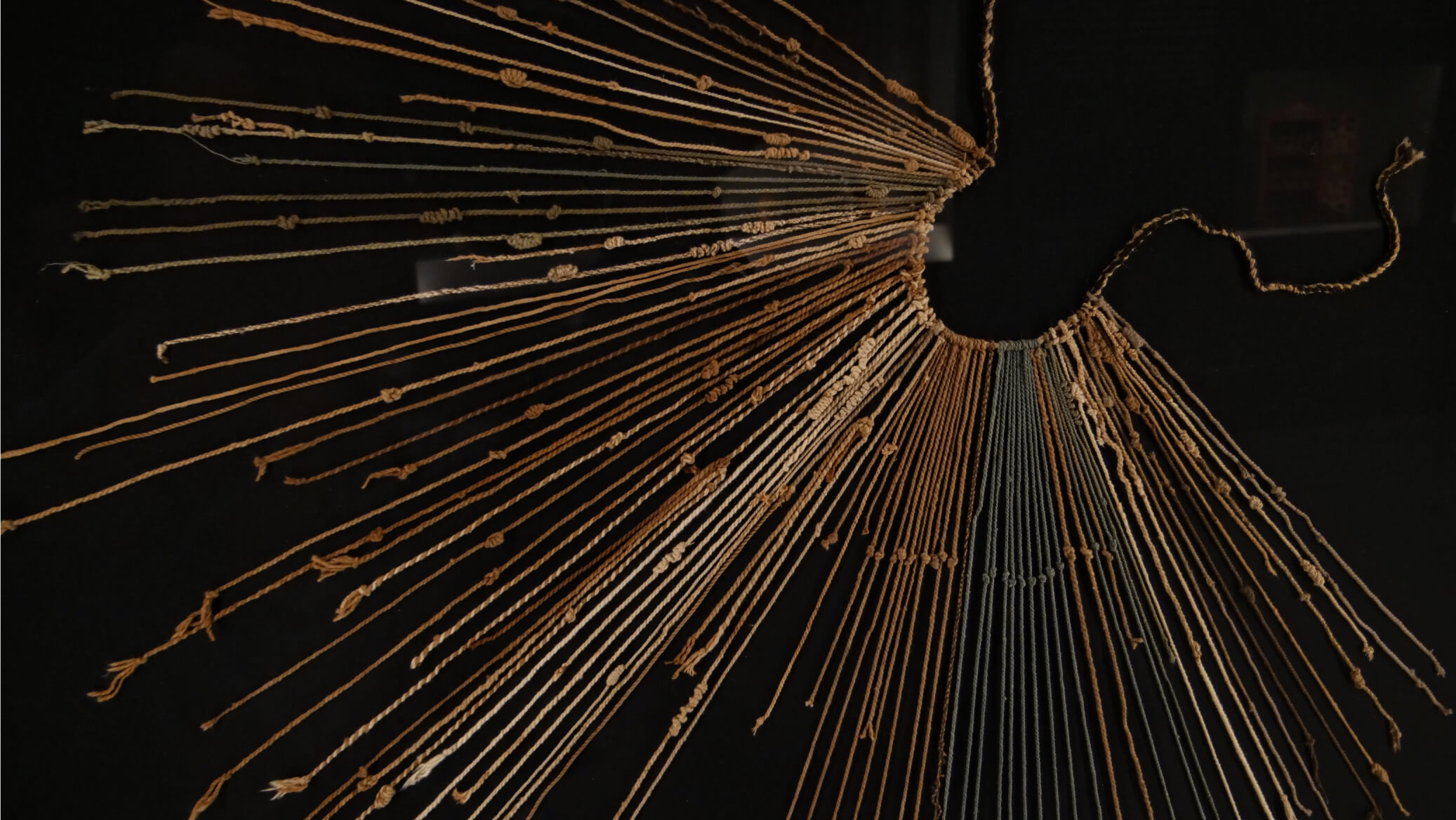
Quipu. Accounting instrument.
Camelid fiber
Inka, Andes Centrales
1400-1532 d.C.
Quipus are instruments in which numeric and syllabic information is recorded. Widely used in the Andes during Inka times, they were made of cotton thread or camelid fiber yarn, worked together to form knotted cords. Reading quipus was the job of an expert, the quipucamayoc, who took the quipu between his hands and, by observing and touching each of the cords and knots, interpreted the meanings of its colors, the thickness of the cords, the twisting of the threads, and the kinds and position of knots on them. The senses of touch and sight were essential for this kind of interpretation.

Yupana, stone to calculate (illustration).
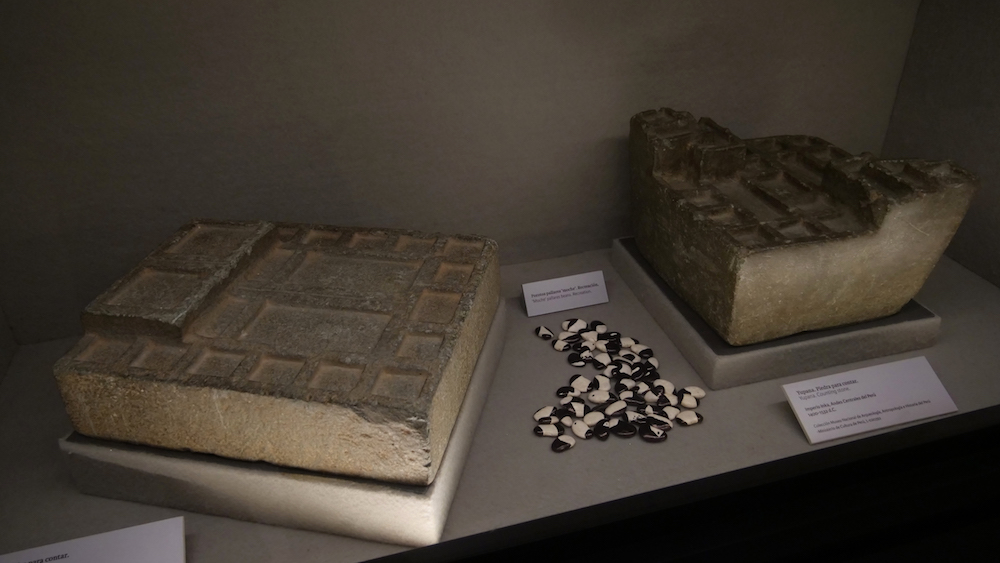
Yupanas and 'pallares' beans (recreation).
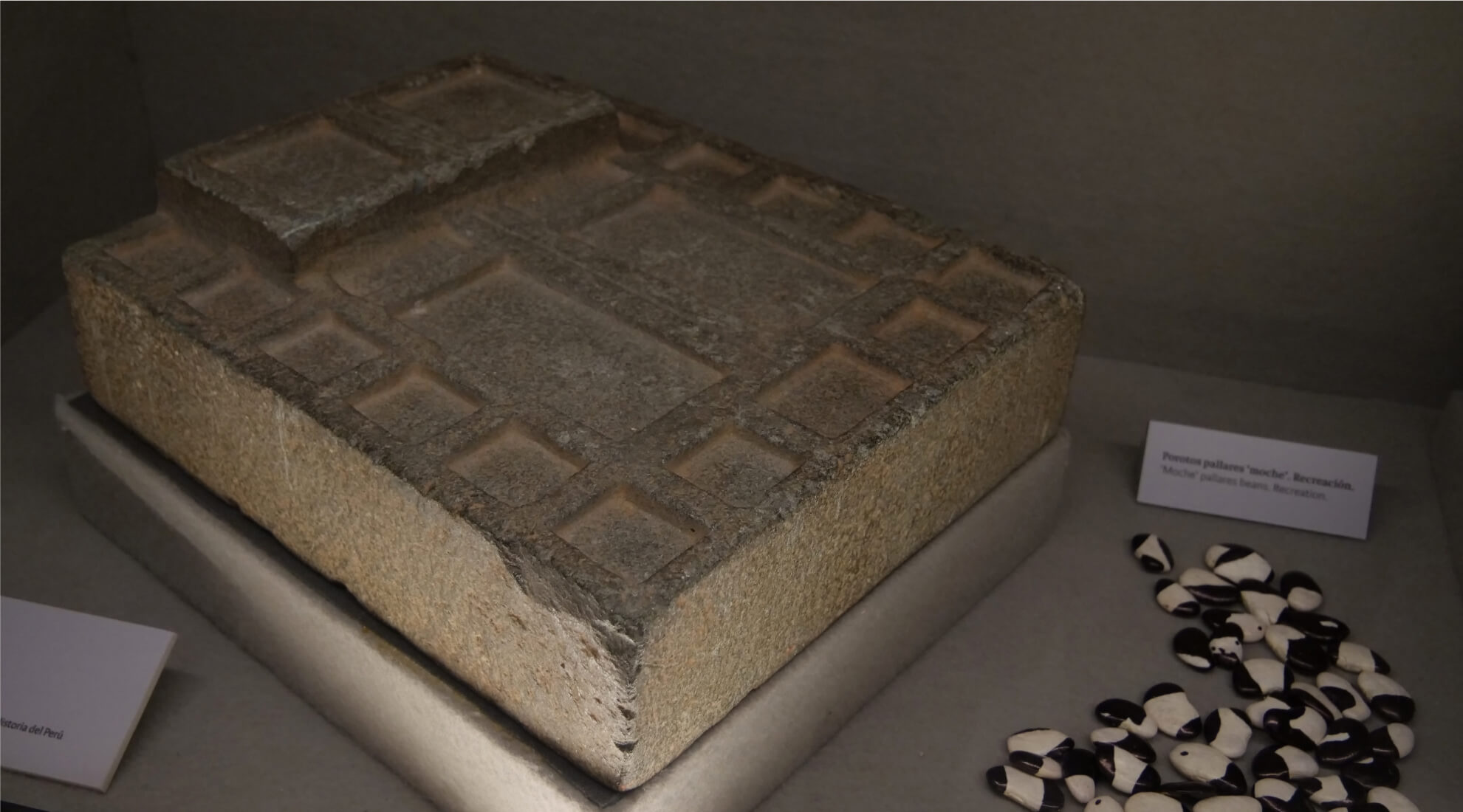
Yupana. Counting stone. Imperio Inka, Andes Centrales del Perú, 1400-1532 d.C. Colección Museo Nacional de Arqueología, Antropología e Historia del Perú-Ministerio de Cultura de Perú, L-008450.

Yupana. Counting stone. Imperio Inka, Andes Centrales del Perú, 1400-1532 d.C. Colección Museo Nacional de Arqueología, Antropología e Historia del Perú-Ministerio de Cultura de Perú, L-020392.

Counting units. Pallar beans. Serving dish, ceramic. Nasca, costa sur del Perú
400-700 d.C. Colección Museo Chileno de Arte Precolombino, 3597.

Counting units. Pallar beans. Cup, ceramic. Nasca, costa sur del Perú, 400-700 d.C.
Colección Museo Colchagua, PE-MCOL 05.
A yupana (from the term yupay, to count) is a tablet similar to an abacus that was used to complement the use of quipus. In Tawantinsuyu these tablets had a ritual purpose—they were employed to record songs and also functioned as calculators. Yupanas consist of a system of compartments in which stones or pallar beans were placed to denote numbers in a complex numeric notation system that is still used in some schools in Peru today to teach mathematics.
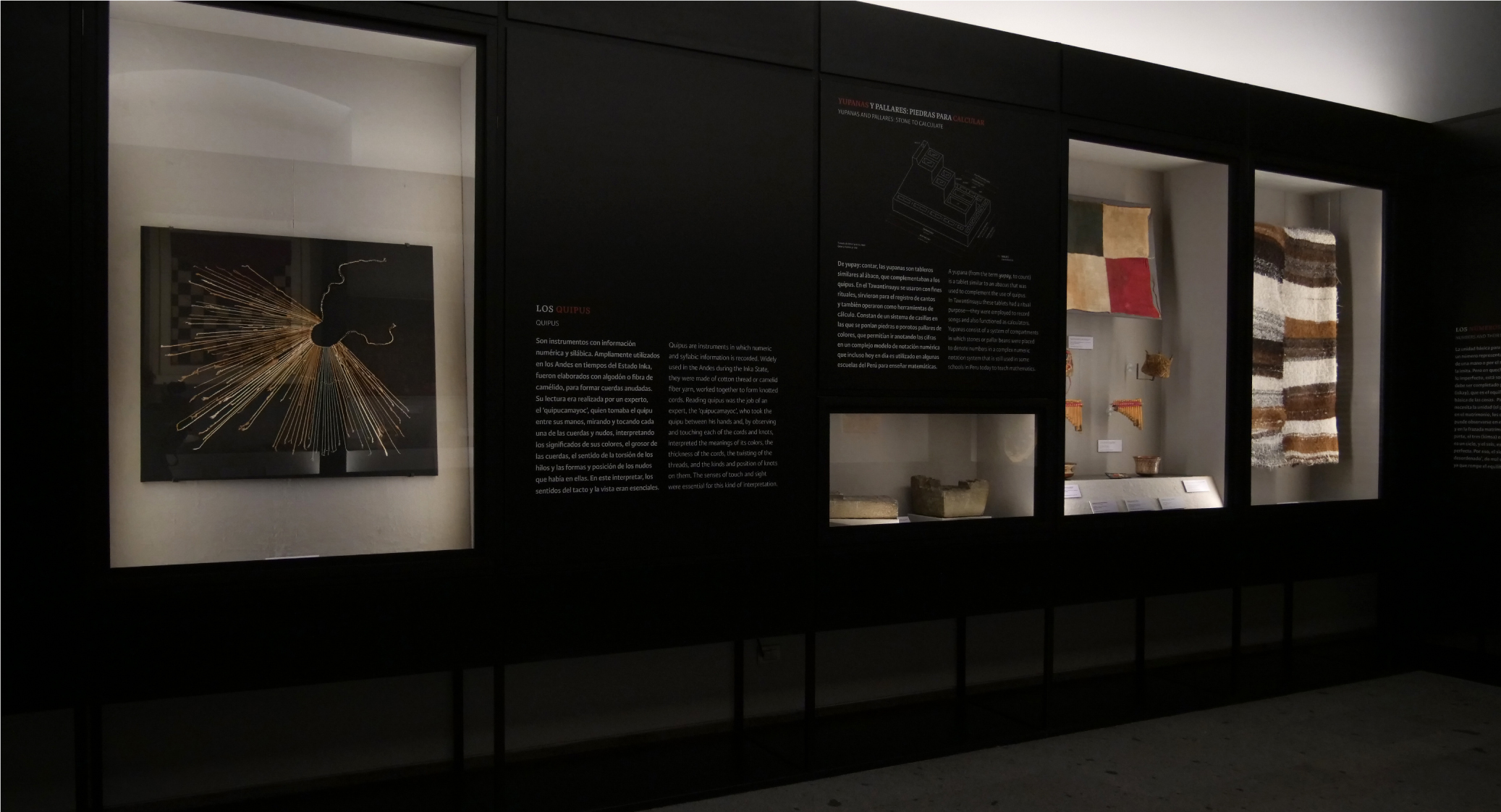
Exhibition unit: Numbers and their meanings.

Exhibition unit: Numbers and their meanings.

Exhibition unit: Numbers and their meanings.

Numbers. Four-part design on a ceremonial cloth (inkuña). Camelid and cotton fiber. Wari-Nasca, costa sur del Perú, 700-900 d.C.
Colección Museo Chileno de Arte Precolombino, 0581.
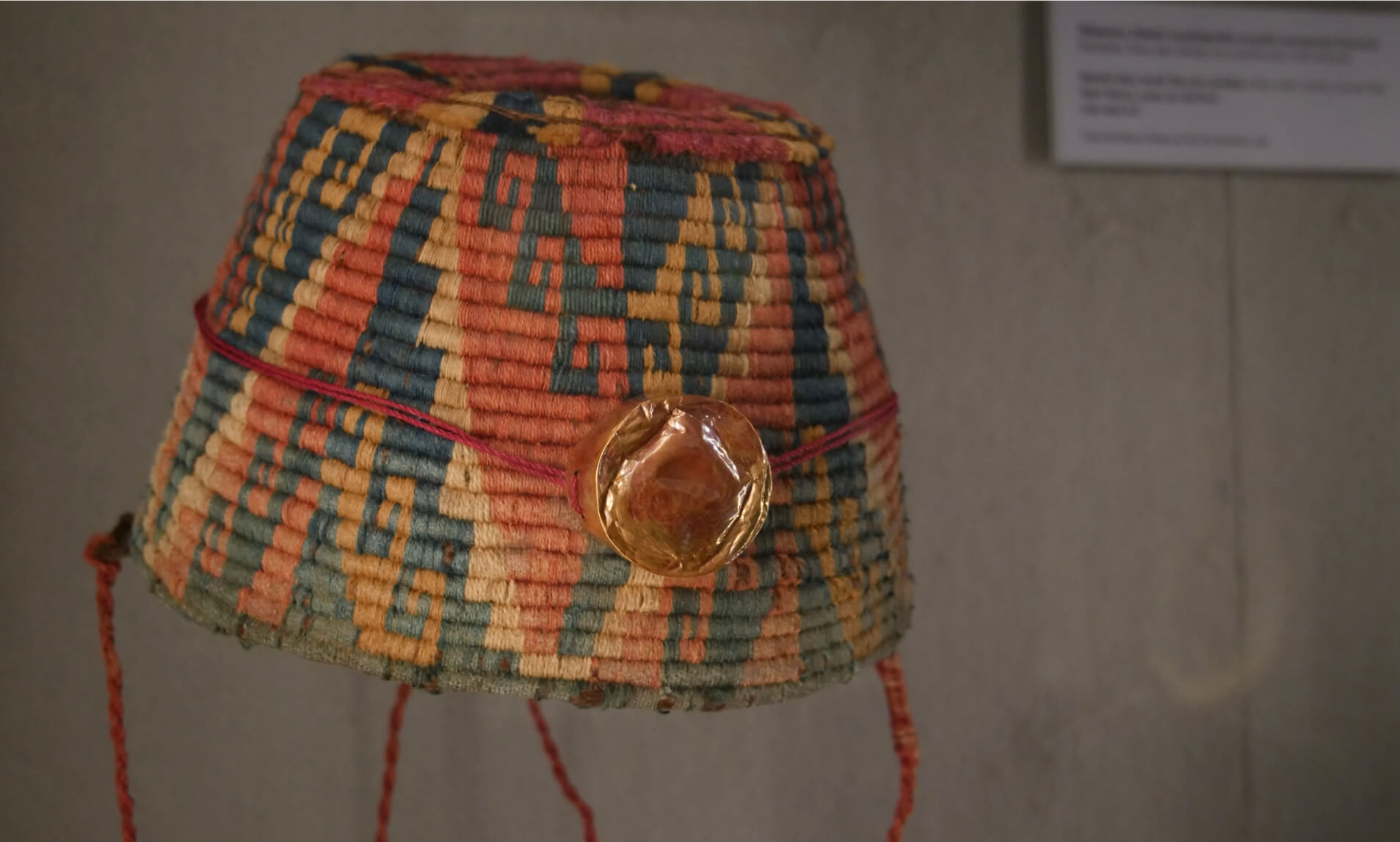
Numbers. Odd number design representing balance.
Hat, textile.
Inka Altiplánico-Caranga, norte de Chile, 1400-1532 d.C. Colección Museo Chileno de Arte Precolombino/DSCY 1762.
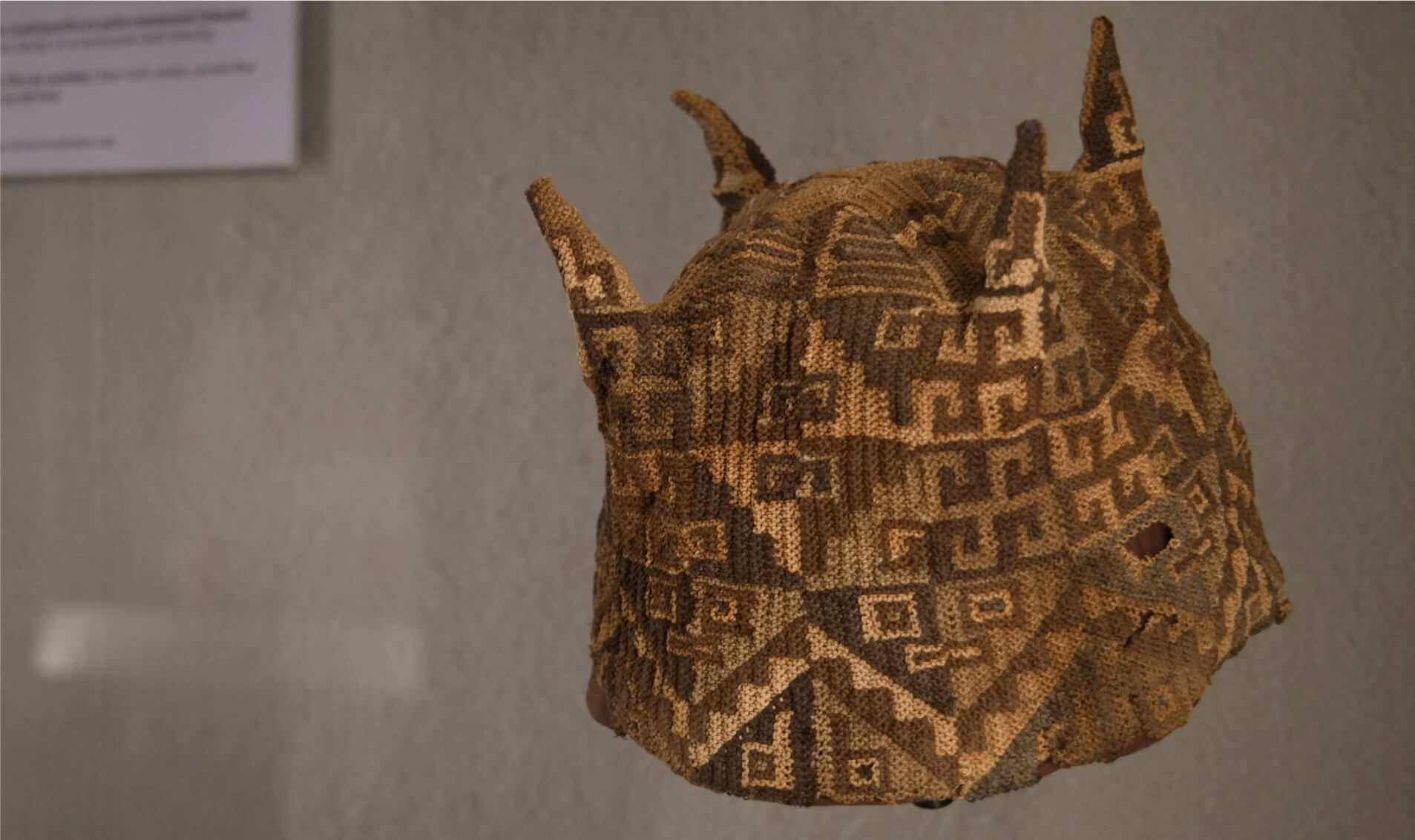
Numbers. Four-part design, one of the world orders. Hat, textile. Tiwanaku (Tarapacá), norte de Chile, 500-800 d.C. Colección Museo Chileno de Arte Precolombino, 2713.

Numbers. Two, the basic unit of everything. Flute (siku), cane and wool
Aymara (Arica), norte de Chile. Colección Museo Chileno de Arte Precolombino, 2205.
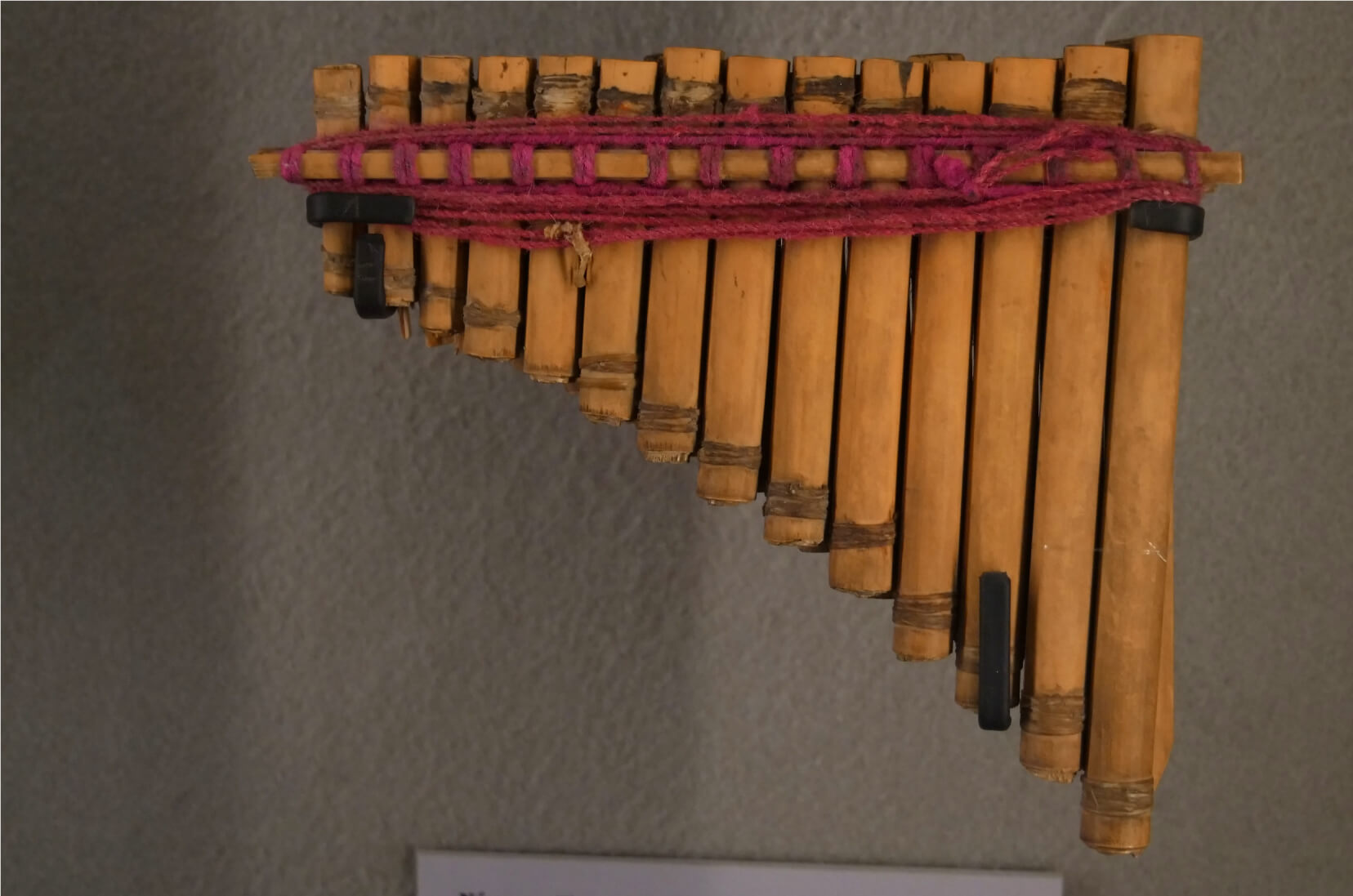
Numbers. Flute (siku), the other half of the pair. Cane and wool. Aymara (Arica), norte de Chile. Colección Museo Chileno de Arte Precolombino, 2205.
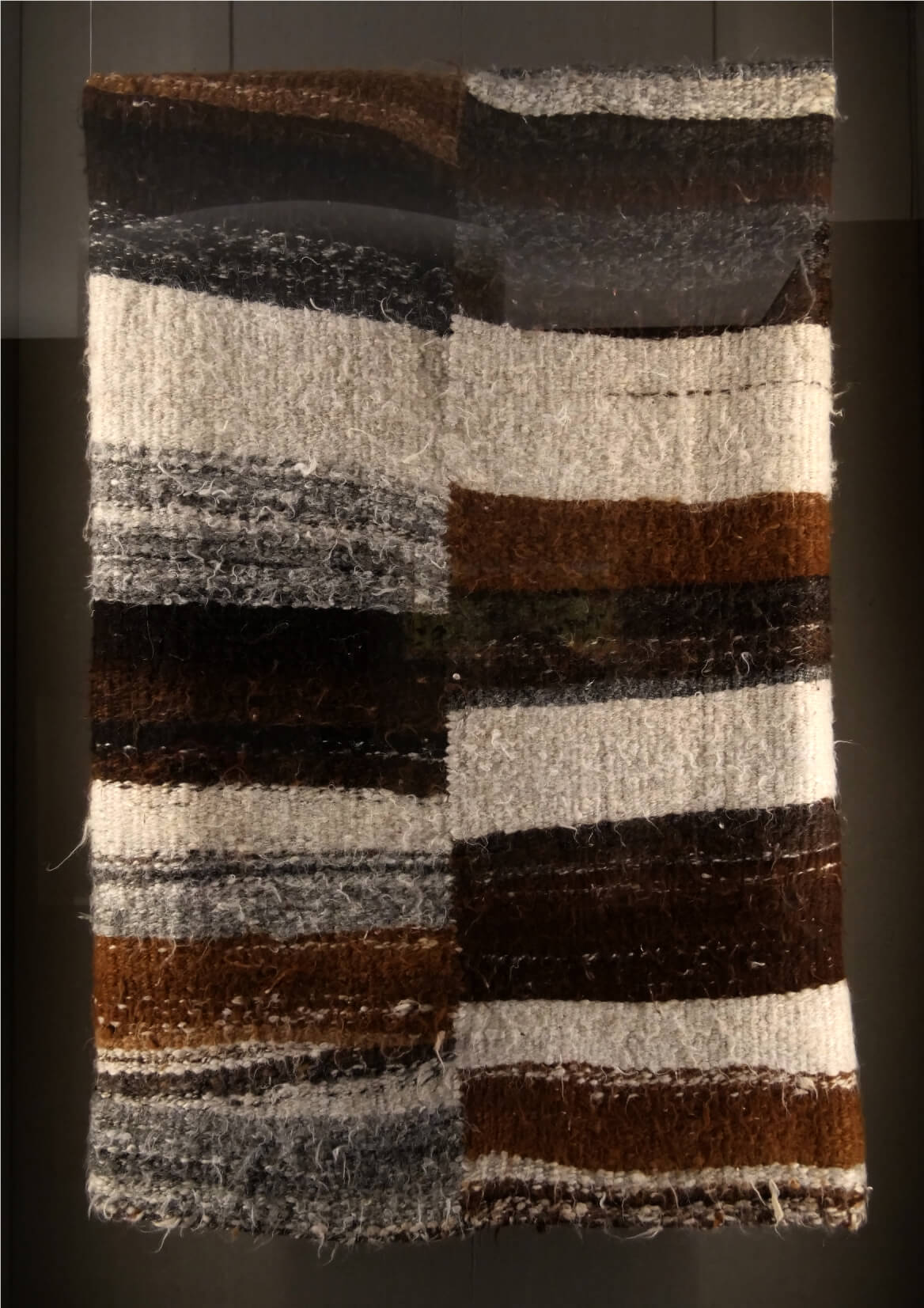
Numbers. Two, marriage blanket (ch'usi) showing the union of different things in its symmetry. Textile, camelid fiber. Aymara, Isluga, norte de Chile. Colección Museo Chileno de Arte Precolombino, 2149.
The basic counting unit is five, represented by the fingers on one hand and by the knot of the ‘quipu’ that imitates the hand. But in Quechua, one (uj) is the imperfect, it is alone (‘está chulla’ – it is single) and must be completed to form a pair (iskay), which is balance and the basic unit of all things. To function, the unit (the pair) is needed, like a married couple, like the eyes or hands. We can observe this in the pair of ziku-flutes and on the ch’usi-matrimonial blanket. On the other hand, three (kimsa) is a full number, a cycle, and six is its perfect repetition. Because of this, seven (qanchis) is ‘a messy one’, one that misbehaves and upsets the balance.




































